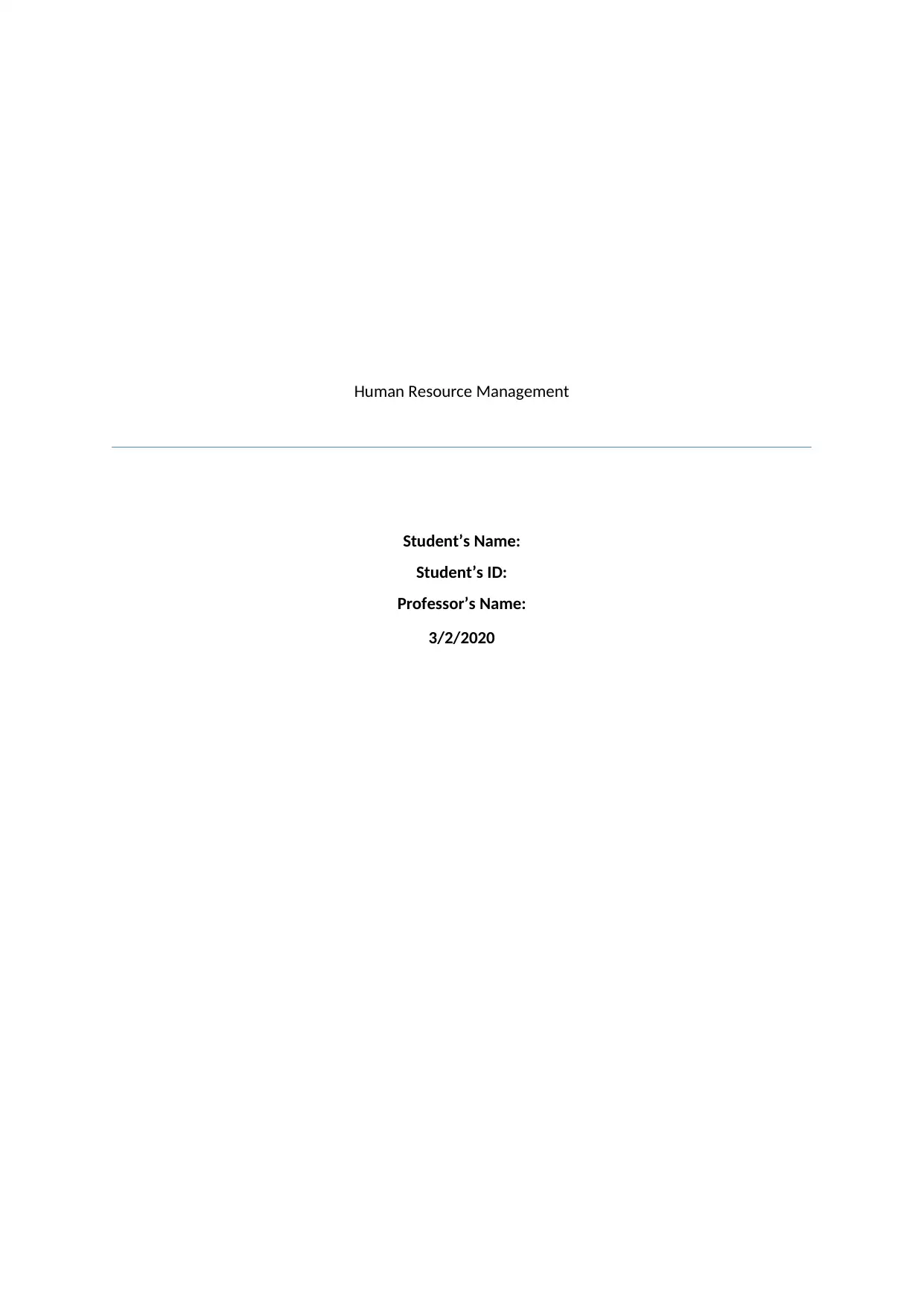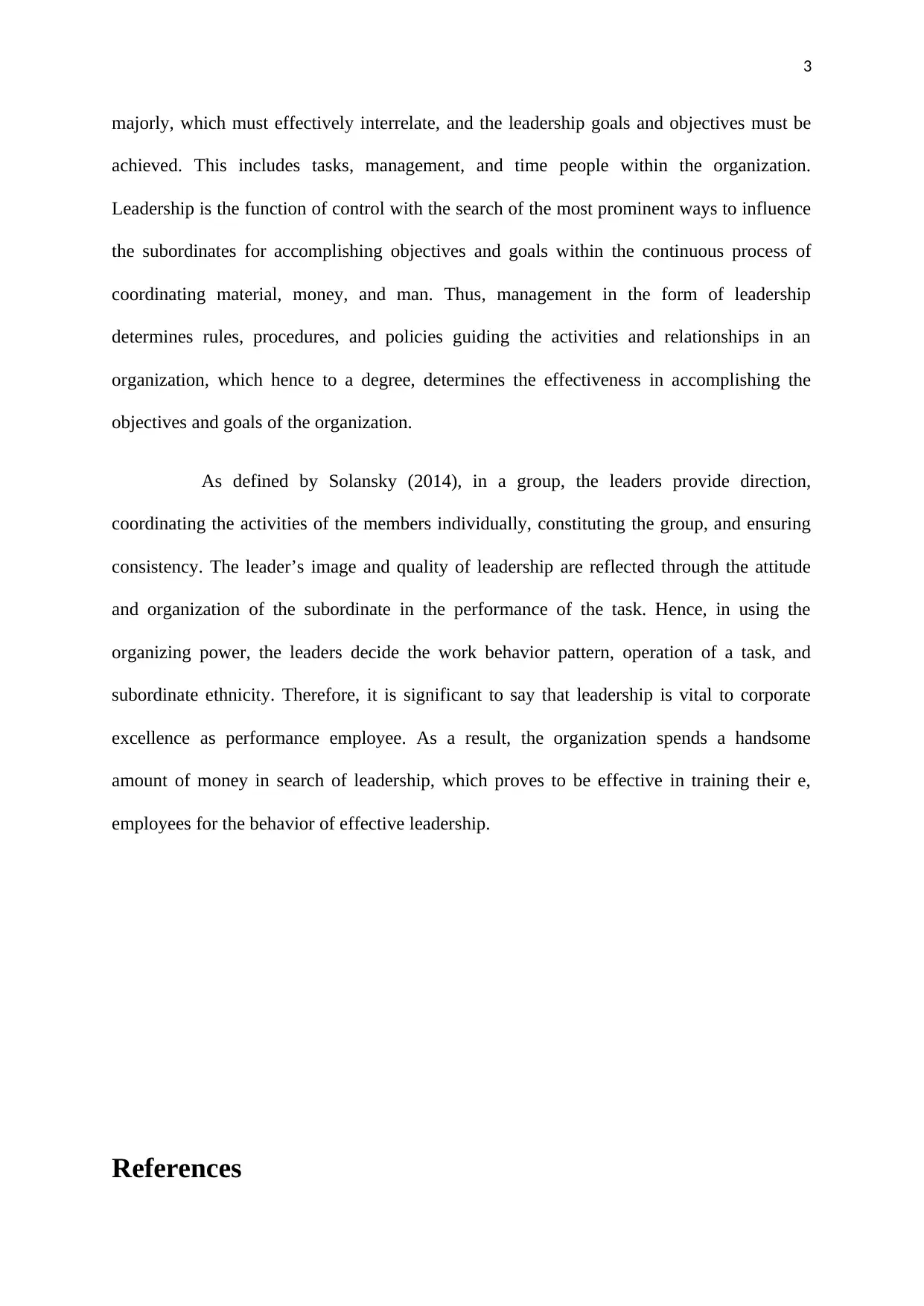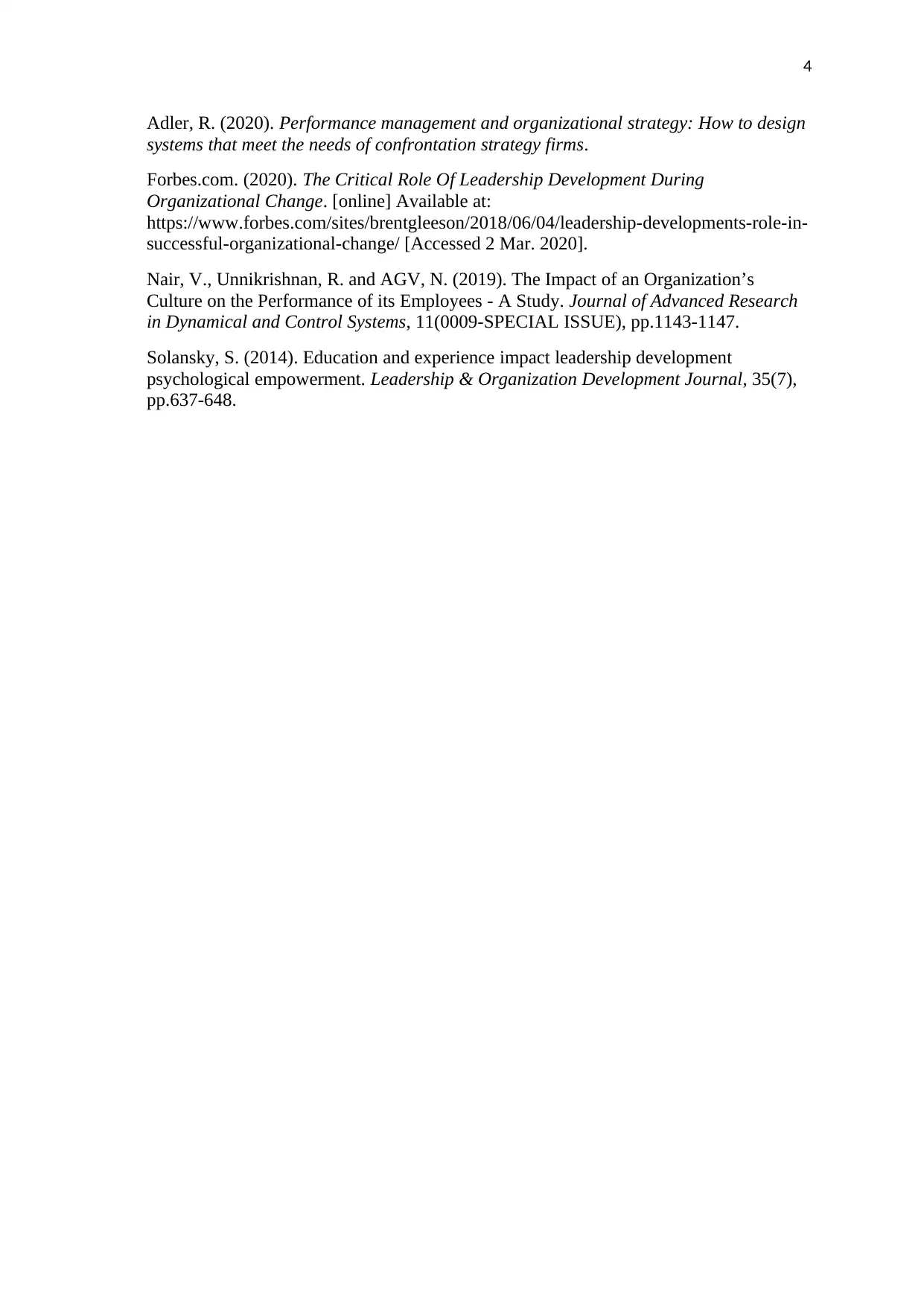The Impact of Management and Leadership in Human Resource Management
VerifiedAdded on 2022/08/16
|4
|751
|45
Essay
AI Summary
This essay delves into the significant impact of management and leadership on organizational performance within Human Resource Management (HRM). It emphasizes the importance of developing a strong performance management culture, highlighting how effective management facilitates regular employee-manager meetings, setting clear objectives, and providing coaching. The essay also addresses the negative impacts of poor management, such as work stress, blame culture, and reduced productivity. Furthermore, it explores the role of leadership in directing organizational activities, emphasizing the importance of interpersonal relationships and the leader's ability to influence subordinates. The essay references sources like Adler (2020) and Solansky (2014) to support the arguments, concluding that effective leadership is vital for corporate excellence and that organizations invest heavily in leadership training to enhance employee performance and achieve their goals.
1 out of 4










![[object Object]](/_next/static/media/star-bottom.7253800d.svg)